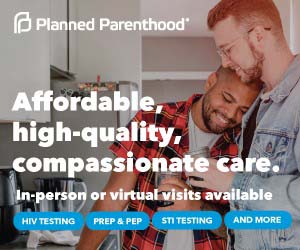The American Society for Reproductive Medicine (ASRM) recently updated its definition of “infertility” to make it more inclusive of LGBTQ+ and single people who seek fertility healthcare. This change could motivate policymakers and insurers to be more inclusive as well, said two experts who spoke with me.
People may need fertility healthcare for a number of reasons, including problems with their reproductive systems, not having a partner, or not having one with the opposite gamete (egg or sperm). Many insurers, however, only cover such treatment after a medical diagnosis of infertility. This can mean a requirement to “try naturally” for months before being eligible for treatment (obviously not an option for single people and same-sex couples), or for same-sex couples to pay out of pocket for documented attempts at assisted insemination, while different-sex couples can simply state that they’ve been trying. Some companies have changed their policies (or, as in a recent case brought by a queer mom against Aetna, been forced to by lawsuit) to cover infertility without such a requirement; many others have not. Only 21 states plus D.C. have laws mandating any kind of fertility coverage, with only Maine, Illinois, Colorado, and D.C. using definitions clearly and fully inclusive of LGBTQ+ and single people.
The ASRM’s new definition, announced at the organization’s annual meeting on Oct. 14, explicitly includes those who need donor gametes for any reason, either as an individual or with a partner, and affirms the need for fertility care regardless of sexual orientation or relationship status.
ASRM CEO Jared Robins, MD, said in a statement, “This revised definition reflects that all persons, regardless of marital status, sexual orientation, or gender identity, deserve equal access to reproductive medicine. This inclusive definition helps ensure that anyone seeking to build a family has equitable access to infertility treatment and care.”
While the definition in itself carries no legal weight, ASRM guidelines nevertheless have clout. Polly Crozier, director of family advocacy at GLBTQ Legal Advocates & Defenders (GLAD), told me that she thinks the new definition will be “tremendously influential.” She explained, “Policymakers often cite ASRM guidelines in their definitions…. In the realm of fertility healthcare and what insurance companies will cover, they very much look to ASRM as the standard setters.”
Kate Weldon LeBlanc, executive director of Resolve New England, an organization dedicated to resources and advocacy for fertility and family building, told me that her organization has been pushing for a more inclusive definition of infertility for years, and said, “I think it will be so helpful in many states to highlight that the clinical experts in fertility nationally are taking this more inclusive, broad approach to what infertility is.”
The new ASRM definition will likely not mean an immediate change to fertility coverage, even in the states that mandate it but have not been inclusive of LGBTQ+ and single people. “It depends on how the statute is drafted,” Crozier said. At the same time, she said, “ASRM is the standard setter for providers in this field, and to have an organization of this magnitude change its definition of what infertility is, I think will have a tremendously positive impact on policy makers.”
LeBlanc added, “Until a bill passes that changes the definition of infertility that’s in statute, then it’s to some degree up to the discretion of the insurance companies and/or to private employers who provide fertility insurance outside of the mandate.”
The new definition will, however, be “really helpful” to those currently attempting to expand access to fertility care, Crozier said. “Reproductive justice means the ability to build your family. Many, many, more people than currently have access need access to fertility healthcare. It’s not just a disease or condition. In fact, there are many people in our population who need fertility healthcare to build their families because they’re single, because they’re LGBTQ — and that healthcare has to be accessible to a broader swath of people.”
LeBlanc does feel that the new ASRM definition, while a significant step, could be even better. “I would prefer no gendered language at all,” she said. And by referring to “a” female partner instead of “the” female partner, “it assumes there is a female partner or assumes there’s only one.” Even though there is room for improvement, she still affirms, “I was so happy to see this.”
Crozier agreed, “It’s not perfect, but I think it goes so much further in really making clear that single people and LGBTQ people should have access to fertility healthcare.”
In the longer term, the new definition could even help establish fertility coverage under Medicaid, Crozier said, because it frames infertility from the perspective that “many people want to build a family and they should have access to doing that.” She explained, “We’re really at the beginning of a conversation to say Medicaid programs should cover infertility healthcare. Currently no state in the country has comprehensive fertility healthcare for people who are on Medicaid. I think we need to be considering that it’s not just LGBTQ people or single people on private health insurance, it is everybody in our community who has that desire to build their family.”
The ASRM’s new definition thus gives individuals, organizations and policymakers a powerful new tool. Crozier said she’s “thrilled” with the news, and asserted, “That core definition of what infertility is drives so much of the conversation on what healthcare is covered by insurance, so it’s really important that definition is right and that it doesn’t exclude people.”

